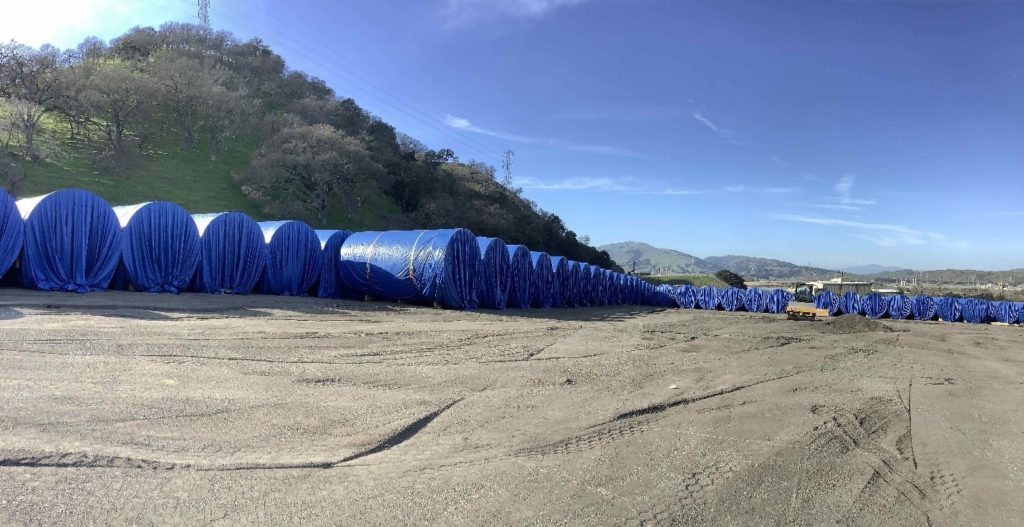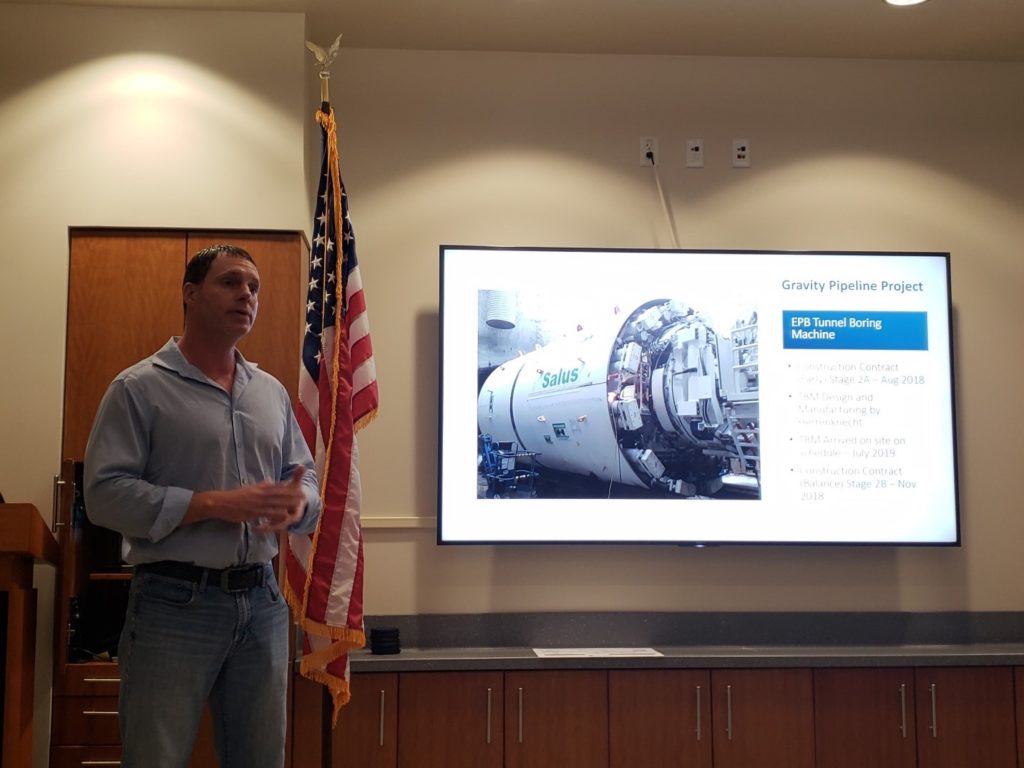Salus, the Tunnel Boring Machine (TBM), arrived at its first destination at the shaft located on the northern end of Inner Bair Island. This is the first of the two tunnel drives that Salus will be completing. The breakthrough of Salus marks a major milestone in the construction of the GP project, for SVCW, and for its RESCU Program.
Another key element of the Gravity Pipeline construction includes installing the carrier pipe within the completed tunnel. The carrier pipe will convey raw wastewater to the wastewater treatment plant. The first fiber reinforced polymer pipe sections were shipped to a storage yard in Sunol, California. Quality control checks were performed on the pipe sections. In order to protect the pipe sections from weathering at the storage yard, SVCW’s tunnel contractor partner, Barnard-Bessac Joint Venture (BBJV), covered each of the inspected sections. BBJV and SVCW are protecting this critical element to ensure the pipe lasts through its 100-year design life.
From the planning of the Gravity Pipeline to its design and construction, SVCW and partners have made excellent progress. The Gravity Pipeline project is approaching one of its biggest milestones, Salus’ breakthrough at the Bair Island shaft. SVCW and its tunnel construction partners had the opportunity share information about the Gravity Pipeline project at the California Water Environment Association, Santa Clara Valley Section event in February. The Owner’s Quality Assurance Lead and BBJV Project Manager presented the progressive design-build delivery method to over 70 attendees. Their presentation included insights on the construction work and the proposed tunnel, and the design processes for connecting the tunnel to existing and new SVCW facilities. The progressive design-build approach provided an avenue for enhanced teamwork, which resulted in several valuable engineering opportunities for additional cost and time savings. The team was able to take a moment to reflect on the journey and lessons learned up to this point.


